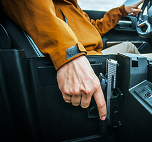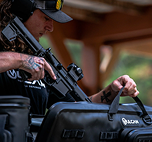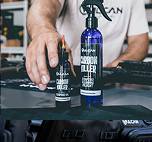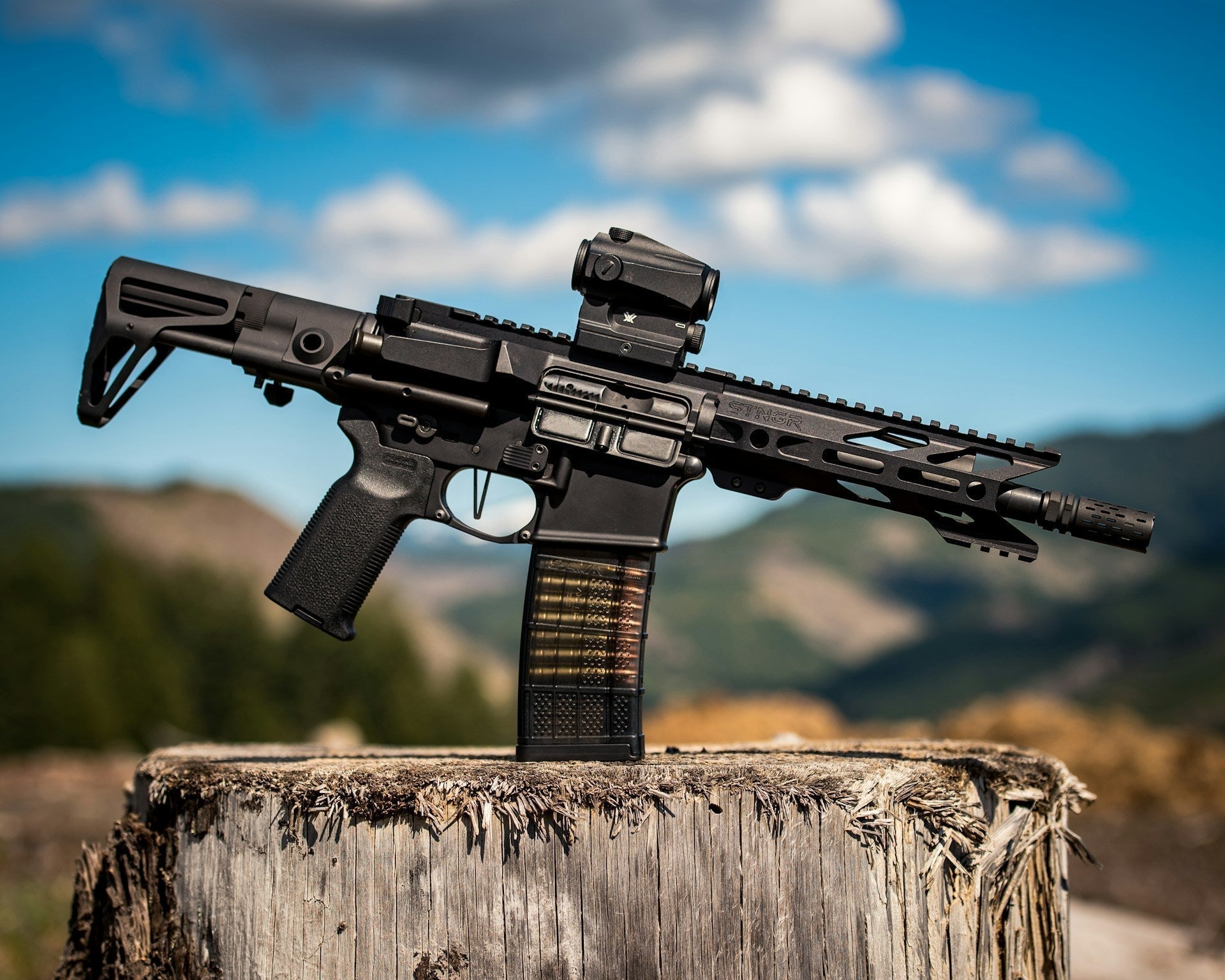When you mount your handgun, you expect it to stay put. That seems simple enough until the magnet doesn’t do its job. A weak or worn-out magnet can cause more than just frustration. It can mean a handgun shifts or falls when the vehicle hits a bump or when you try to draw it. That’s not something you want during a daily commute or out in the field.
The strength of the magnet is one of the most important parts of any mount setup. It might look secure at first, but if the magnet isn’t strong enough to hold the weight of your firearm through everyday movement, it can quickly cause safety problems. Whether your mount is in your car, under your desk, or near your bedside, understanding what affects magnet strength can help avoid trouble before it starts.
Understanding Magnet Strength for Handguns
Magnet strength refers to how much weight a magnet can hold without losing grip. When it comes to gun mounts, this is often called the pull force, which tells you how hard the magnet pulls on a flat steel surface. But that number alone doesn’t tell the whole story.
Placement, contact area, and the firearm’s finish also affect how well the magnet holds in real use. For example, a magnet might hold a lightweight revolver well but lose grip with a full-sized pistol that has a wider frame or textured slide. Even if a product says it can handle the weight, the shape and material of your handgun play a big role in the actual hold.
Some folks assume any strong-looking magnet will do the job, especially if it feels solid when first attached. But over time, weaker magnets may lose strength from repeated temperature changes, bumps, or rough handling. If that grip softens just a little, a hard stop or sharp turn could shake things loose. One small shift in grip could be all it takes to push the setup into unreliable territory.
That’s why it’s worth knowing more than just surface-level details. A magnet for a handgun isn’t just about strength, it’s about consistency. Is it reliable during quick access? Can it hang on during vehicle movement? Can it hold up long term with your specific firearm? These are the questions that matter. Choosing gear that answers them can spare you plenty of future headaches.
Common Magnet Strength Issues
Sometimes, magnets that worked great at first eventually start causing problems, and those issues can show up in a few clear ways. Here are some of the most common ones:
1. The handgun keeps shifting even when mounted
This can mean the magnet has lost strength or that it isn't sized properly for the surface contact the gun needs.
2. The mount seems stable until you hit rough terrain or take a sharp turn
If your firearm starts rocking or even falls out of place while driving, that’s a clear sign the magnet can’t handle the pressure and weight consistently.
3. Magnetic surfaces start to scratch the handgun frame
This may not be directly about strength, but poor-quality cases or misplacement can lead to damage. A magnet should hold securely without requiring force that risks scratching or chipping.
4. The gun won’t stay in place during quick draws
This is important for setups where fast access matters. If you're grabbing the firearm and the whole mount shifts or the weapon sticks too tightly, something's off with balance or magnet strength.
One example comes from an outdoorsman who mounted a handgun under his truck’s dashboard. At first, it functioned fine but started slipping out of alignment during long trips on dirt roads. It turned out the magnet’s pull wasn’t rated for the weight of his full-sized pistol combined with the uneven driving surfaces. His mount looked strong on paper but wasn’t a match for real conditions.
Not every issue means the magnet is defective. Sometimes it just isn't the right fit for the gun or mounting spot. That’s why it's helpful to understand what kind of problems can come up when the match isn't right. Catching these early on can keep your setup safe and reliable.
Choosing the Right Magnet for Your Handgun
Picking the best magnet for your handgun involves a bit of homework. Knowing the weight and dimensions of your firearm is a good start. Different handguns require magnets with varying pull forces to keep them secure. Smaller handguns might hold fine with lower force ratings, but heavier, full-sized models often need more robust options.
Another key factor is the mounting location. If you’re placing your gun in a vehicle, the magnet should tolerate vibrations and bumps. It's smart to use one that’s rated a bit higher than you think you need to give yourself a margin of safety. Magnets also come with different coatings to prevent scratches on your firearm, which is something to keep in mind if you want to protect its finish.
Some features to consider when choosing a magnet include:
1. Size and shape
Pick a magnet that fits where you want to mount it and matches the gun's profile.
2. Strength rating
Focus on the pull force. Get a magnet that can handle your gun’s weight, adding a safety margin for peace of mind.
3. Protective coating
Look for magnets with rubber or plastic casings that prevent damage to your firearm’s surface.
Enhancing Magnet Grip
Improving the grip of your magnet can mean the difference between reliable performance and frequent mishaps. Start by making sure the mounting surface is clean and flat. Dust or uneven spots can weaken the magnet’s hold. If the magnet comes with screws, use them for added support but make sure they don’t get in the way of the contact surface.
The position matters too. Vertically mounted magnets might handle weight differently than those in horizontal setups, so taking time to test placement can help get a better hold. Make sure the firearm makes full contact with the magnet to get the best grip.
If you’re placing your gun in a spot with a lot of shaking or motion, like a truck or off-road vehicle, you might need to reinforce the magnet. Some brackets or enclosures are made just for those situations and can give extra confidence in the grip.
Ensuring Longevity and Reliability
To make sure the magnet stays reliable over time, regular maintenance helps. Clean both the magnet and the firearm to get rid of dust or metal shavings. These can build up and reduce the magnet’s strength.
Look out for wear and tear. If the coating is getting rubbed off or you spot cracks in the magnet, it's probably time to swap it out. Doing quick checks every so often is a simple way to catch problems early. A little care goes a long way in making your magnet last longer and hold tight when you need it to.
How to Keep Your Setup Safe and Strong
Choosing the right magnet and keeping it in good shape plays a big part in making sure your handgun stays secure. Get into the habit of checking your setup from time to time to make sure it’s still holding strong. If anything about your firearm changes, like size, weight, or even where and how you carry it, don’t be afraid to test a new setup that works better.
Peace of mind comes from knowing your handgun is safe, steady, and ready when you need it. A solid magnet mount may not seem like a big deal at first, but anyone who’s dealt with a loose firearm knows how frustrating and risky that can be. Taking the time to choose the right magnet and giving it a little care keeps your gear dependable and your day worry-free.
For anyone who takes both safety and accessibility seriously, the right setup makes a big difference. VULCAN Arms carries equipment designed to support secure placement wherever it’s needed. To improve your setup, explore how a magnet for a handgun can provide added convenience without sacrificing control.









Share:
When Gun Magnets Stop Working
Strengthening Vehicle Gun Mount Points